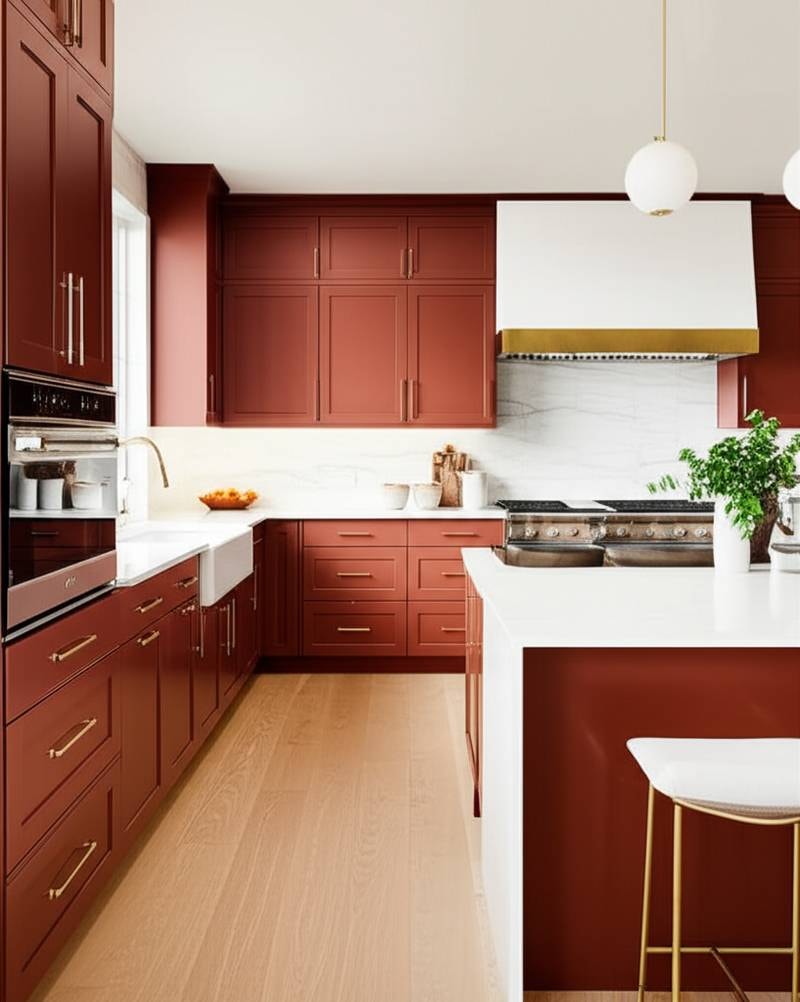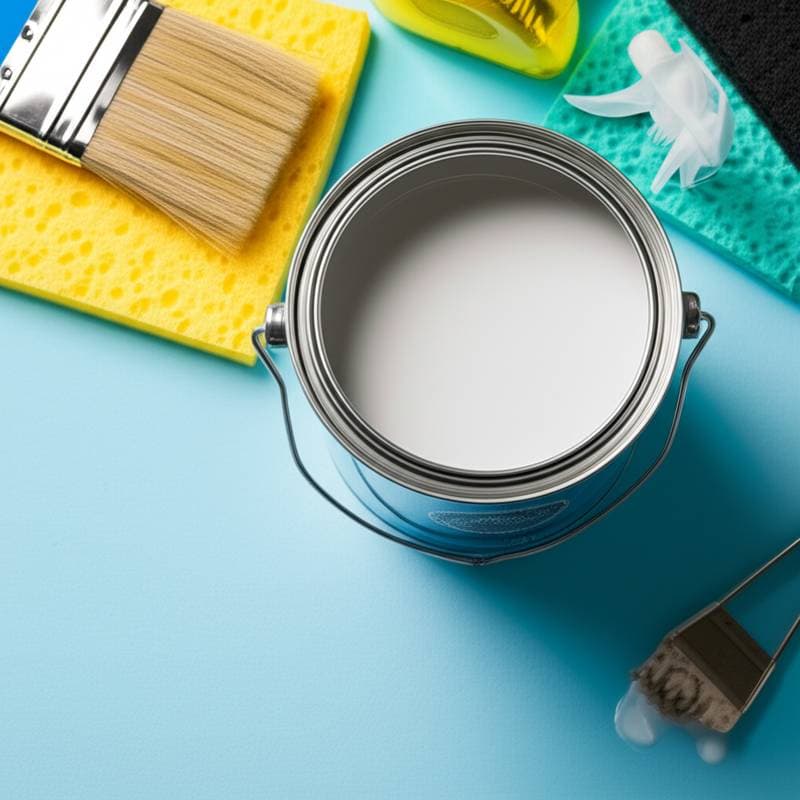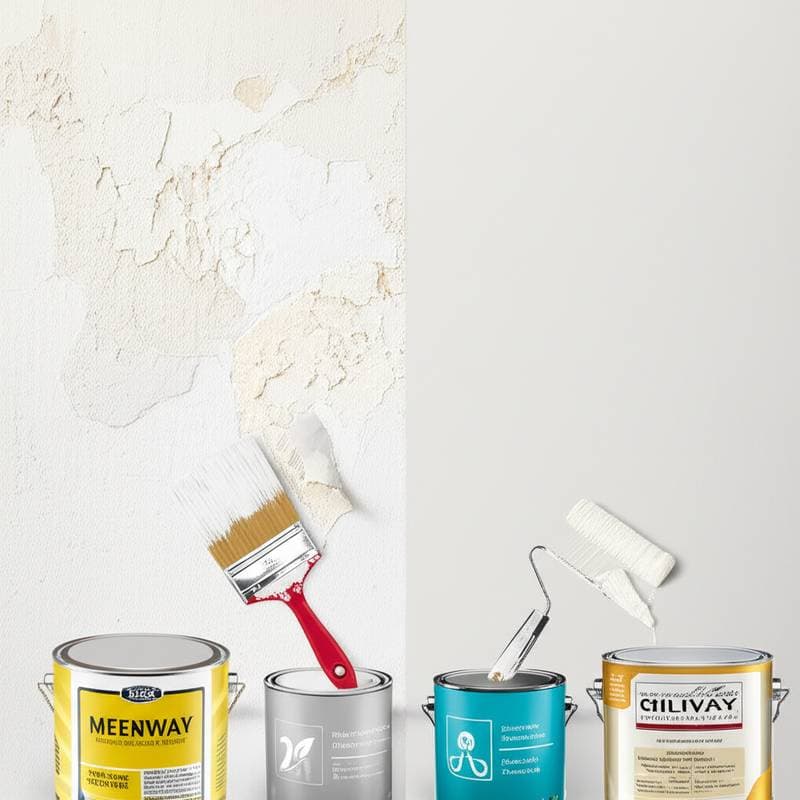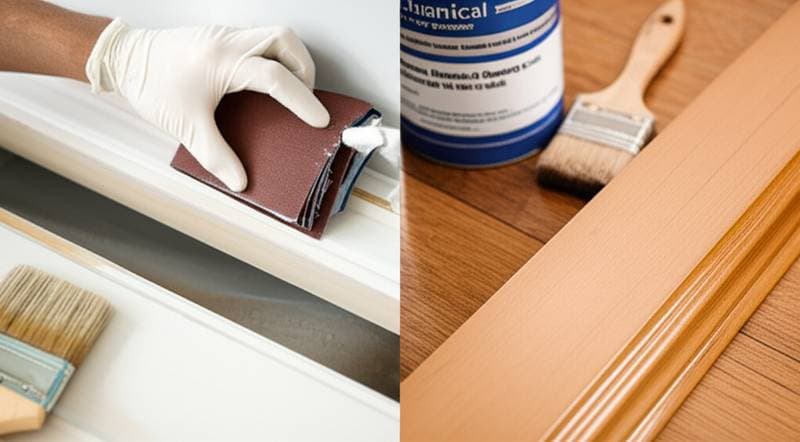Terracotta and Rust: The Rise of Earthy Kitchen Tones
Warm, comforting, and versatile, terracotta and rust tones emerge as dominant forces in contemporary kitchen design. These colors introduce depth and personality to areas previously characterized by stark white and cool gray palettes. Homeowners increasingly seek earthy schemes that convey natural warmth alongside refined sophistication. Application on cabinets, walls, or decorative elements demonstrates the adaptability and welcoming nature of these shades.
The Enduring Appeal of Earthy Warmth
Terracotta and rust establish a visual link to organic elements such as clay, weathered brick, and oxidized metal. Such connections foster comfort, harmonizing with rustic or sleek interior styles. In contrast to cool neutrals, these tones ground the environment and impart a personal touch. Integration with textures like reclaimed wood, limestone, or subtle matte surfaces cultivates a kitchen that balances elegance with everyday usability.
This trend signals a broader evolution in residential design toward genuineness and ease. Individuals gravitate to colors that transcend fleeting fashions, embodying lasting resonance. Terracotta exemplifies this balance, blending historical familiarity with innovative presentation. For instance, in sunlit rooms, these hues soften harsh lines, creating an atmosphere conducive to family gatherings or quiet mornings.
Incorporating Terracotta and Rust into Kitchen Spaces
Homeowners possess numerous options for introducing these tones, scaled to desired levels of commitment and impact.
Cabinetry Applications:
Apply a muted rust to base cabinets while maintaining neutral uppers for equilibrium and subtle heat. Opt for matte varnishes to accentuate the shade's inherent richness, providing a tactile smoothness that elevates daily interaction with storage areas. Consider two-tone schemes where island cabinets in deeper terracotta serve as focal points, drawing attention without dominating the layout.
Accent Wall Strategies:
Install a terracotta wall adjacent to open shelving or a casual dining area to inject focal energy minus spatial overload. This approach complements adjacent surfaces in ivory, beige, or soft sage for cohesive flow. Test the color against existing fixtures to ensure it amplifies rather than competes with light sources.
Backsplash and Tile Integration:
Select artisanal tiles in faded clay variations to infuse handmade authenticity. These elements diffuse illumination gently, enhancing pairings with durable surfaces like engineered quartz or end-grain wood. For added dimension, mix tile sizes or patterns, such as subway styles in rust gradients, to mimic natural stone veining.
Decorative and Accessory Introductions:
Individuals new to bold palettes begin with modest additions. Position terracotta ceramic vessels for herbs, layer rust-hued linens on open counters, or display aged copper utensils. Such items allow experimentation, revealing how the tones interact with current decor before larger investments.
Optimal Pairings and Material Selections
Earthy shades flourish alongside organic substances. Pair with honey-toned oak cabinetry, polished nickel fixtures, or veined travertine for amplified vibrancy. Countertops in bright white quartz or Carrara marble counteract potential heaviness, ensuring airy openness. Dark iron pulls or handles deliver sharp delineation, sharpening the overall composition.
Illumination plays a pivotal role in tone perception. Pendant lights with warm LED bulbs (around 2700K) enhance rust's glow, while recessed options highlight terracotta's subtlety. Avoid overly bright fluorescents, which can mute the palette's intended coziness. In low-light kitchens, incorporate under-cabinet strips to reveal layered depths during evening use.
Professional Insights on Applying These Shades
Painters appreciate terracotta and rust for their resilience, as these colors mask surface flaws more effectively than pale alternatives. Over years, they acquire a gentle patina, enriching the aesthetic. Experts fine-tune intensity, ranging from light ochre washes to intense umber depths, aligning with client visions.
Application demands precision: select low-VOC formulas for indoor air quality. Layer with primer suited to substrate, such as oil-based for wood or latex for drywall. Professionals recommend multiple thin coats over heavy ones to build uniform opacity, particularly on high-traffic cabinet doors.
Preparing for a Successful Kitchen Refresh
Prior to full implementation, apply sample swatches across various exposures, observing shifts from dawn to dusk. Northern-facing windows may cool terracotta toward pinkish undertones, while southern light intensifies rust's orangey notes.
Surface readiness proves essential. Degrease cabinets with trisodium phosphate solution, sand glossy areas for adhesion, and apply blocking primer to seal tannins in woods. Choose scrub-resistant paints rated for humidity, ensuring longevity against splashes and steam. Budget for ventilation during curing to minimize odors.
Frequently Asked Questions
What Distinguishes Terracotta and Rust as Ideal Kitchen Colors?
These shades impart warmth and dimension, suiting modern or classic layouts. They integrate seamlessly with organic elements and infuse character without spatial constriction.
What Is the Typical Cost for Repainting a Kitchen in These Tones?
Professional services generally span $2,000 to $5,000, influenced by area size, cabinet volume, and material grade. Targeted updates like accent features reduce expenses significantly.
In What Ways Can Terracotta Pair with Complementary Colors?
It harmonizes with ivory, bone white, pale mint, or slate gray. Offset intense versions with expansive light planes to sustain equilibrium.
Is Professional Assistance Recommended for Such Projects?
Indeed, particularly for cabinet refinishing or intricate textures. Experts guarantee consistent application, thorough preparation, and enduring results.
How Long Does a Standard Kitchen Painting Effort Require?
Comprehensive overhauls demand three to five days, encompassing setup, coating, and curing phases. Focused accents conclude more swiftly.
Which Finishes Suit Terracotta and Rust Paints Best?
Matte or eggshell variants yield profound subtlety. Employ semi-gloss on cabinets or edges for simplified maintenance.
Realize Timeless Comfort in Your Kitchen
Adopting terracotta and rust transforms functional spaces into nurturing havens. These tones not only elevate visual appeal but also promote enduring satisfaction through their adaptive charm. Consult local experts to tailor the palette, ensuring your kitchen reflects personal style while standing the test of time.



